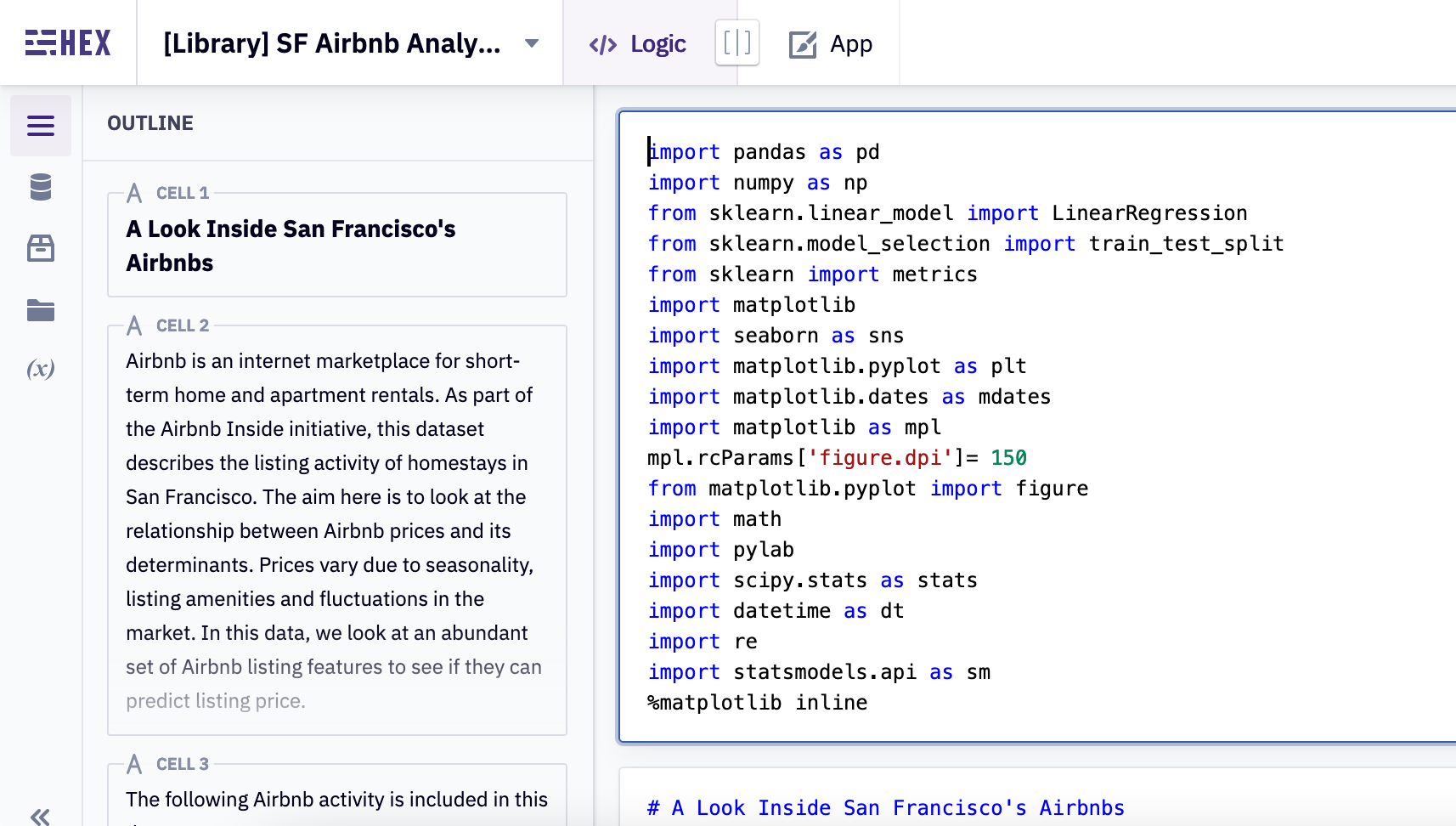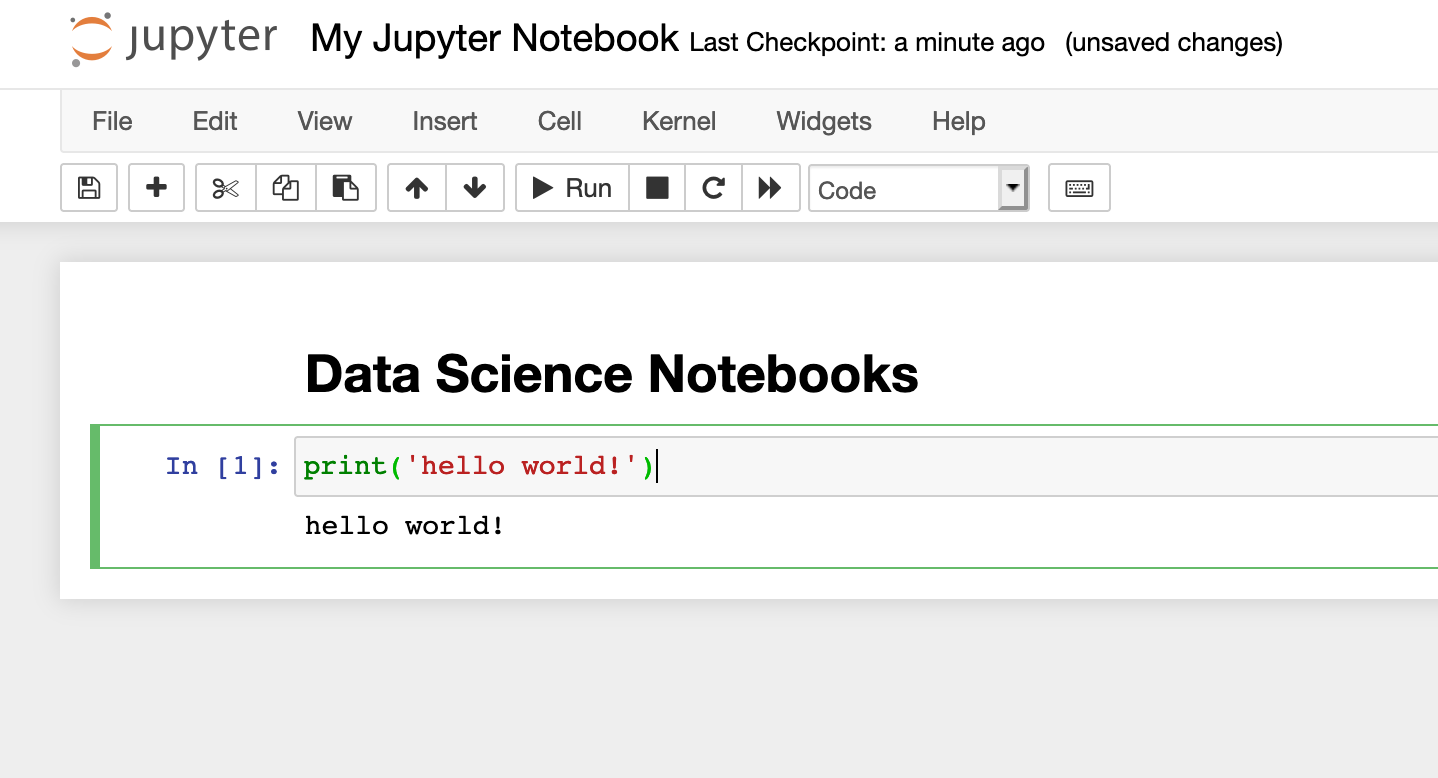Hex vs. Jupyter: A Comprehensive Comparison of Data Science Platforms
Hex and Jupyter stand as influential platforms in the realm of data science, offering tools and features tailored to facilitate data analysis, exploration, and collaboration. Let's delve into a comparative analysis across different categories to understand their strengths and capabilities.
Jupyter Compatibility
Hex:
Integrated Jupyter Support: Hex provides a comprehensive environment that integrates Jupyter notebooks seamlessly, offering users the flexibility of Jupyter notebooks with added functionalities within the Hex platform.
Enhanced Environment: Offers additional tools, collaboration features, and interactive widgets beyond standard Jupyter notebooks.
Jupyter:
Original Platform: Jupyter is the foundational platform for Jupyter notebooks, providing a versatile and widely used interface for data analysis, coding, and visualization.
Open Source: Jupyter is an open-source project with a large community, allowing for extensive customization and extensions.
Verdict: While both platforms are rooted in Jupyter, Hex extends the Jupyter environment with additional tools and features, making it a more comprehensive platform for data science workflows.
Connecting to Your Data
Hex:
Diverse Connectivity: Offers connectors to various data sources, enabling users to seamlessly import data from databases, cloud storages, APIs, and more into their Hex workspace for analysis.
User-Friendly Import: Simplifies the process of importing and working with data from different sources within the Hex environment.
Jupyter:
Data Connectivity: Users can connect to various data sources using programming languages and libraries compatible with Jupyter notebooks.
Flexibility: Offers the freedom to import and work with data using a wide range of libraries and tools within the Jupyter environment.
Verdict: Hex and Jupyter both offer flexibility in connecting to data sources, with Hex providing a more user-friendly approach to data import within its integrated environment.
Interacting and Visualizing Your Data
Hex:
Rich Visualization Tools: Provides interactive visualization libraries like Plotly, Matplotlib, and Seaborn for comprehensive data visualization within its environment.
Interactive Widgets: Enhances data exploration with interactive widgets and tools, enabling users to interact with their data efficiently.
Jupyter:
Visualization Capabilities: Empowers users to visualize data using a vast array of libraries available in the Jupyter ecosystem, offering extensive customization options.
Interactive Plotting: Supports interactive plotting libraries, allowing for dynamic data visualization within Jupyter notebooks.
Verdict: Both Hex and Jupyter offer robust support for data interaction and visualization, with Hex providing an integrated environment with specific interactive features.
Publishing Your Data
Hex:
Publishing Options: Facilitates publishing analyses and visualizations as interactive reports or dashboards, simplifying the sharing of insights.
Embedding Capabilities: Allows users to embed visualizations into web applications or documents for broader accessibility.
Jupyter:
Notebook Sharing: Users can share Jupyter notebooks, enabling collaborators to access, review, and reproduce analyses and visualizations.
Exporting Notebooks: Offers exporting options to various formats for sharing and publishing purposes.
Verdict: Hex emphasizes publishing analyses and visualizations with embedding capabilities, while Jupyter focuses on sharing and exporting notebooks for collaboration and dissemination.
Collaboration
Hex:
In-Platform Collaboration: Offers collaborative functionalities allowing multiple users to work on projects simultaneously within the Hex environment.
Commenting and Sharing: Facilitates commenting on specific sections of code or analyses, fostering collaborative workflows.
Jupyter:
Collaborative Environments: Users can collaborate using version control systems like Git and platforms like JupyterHub, enabling collaborative work on shared resources.
Shared Notebooks: Collaborators can work together on shared Jupyter notebooks, promoting teamwork and version control.
Verdict: Hex and Jupyter provide collaborative features, with Hex focusing more on in-platform collaboration tools and Jupyter leveraging external collaboration tools and environments.
Conclusion
Hex and Jupyter both offer powerful environments for data analysis and exploration. While Jupyter provides the foundation for notebook-based workflows with extensive customization options, Hex extends the Jupyter environment with added tools, enhanced connectivity, interactive features, and an integrated platform for a more comprehensive data science experience.
Choosing between Hex and Jupyter depends on the specific needs of projects, preferences in workflow integration, collaborative requirements, and the desired level of in-platform functionalities.








